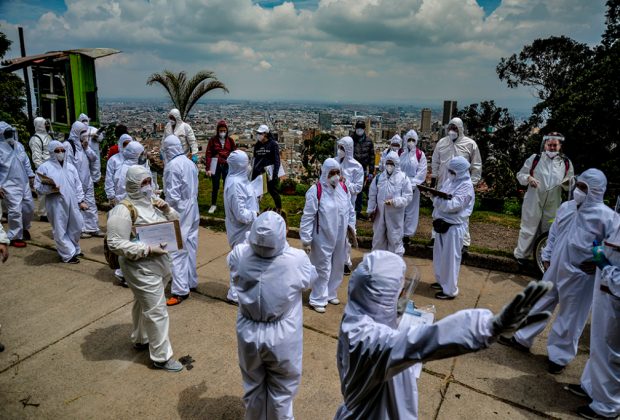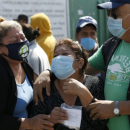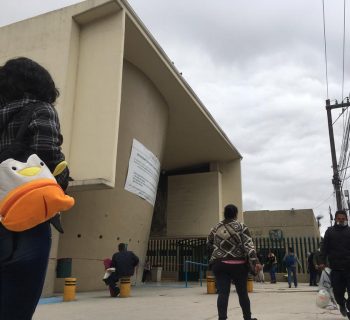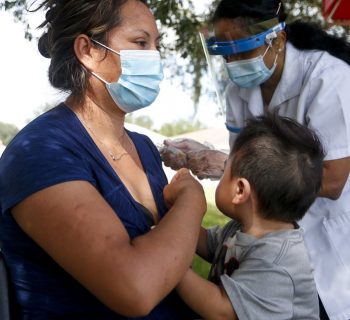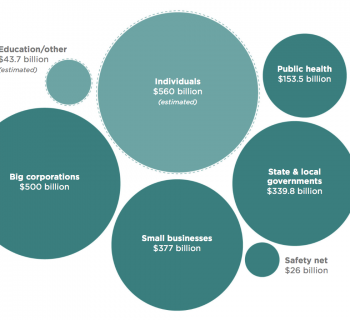Center for American Progress –
The coronavirus pandemic is challenging the capabilities and resources of governments around the world, and the countries of Latin America and the Caribbean are no exception. The region’s widespread poverty, weak health infrastructure, and fragile economies mean its residents could suffer greatly if political leaders do not act swiftly to mitigate the crisis. To date, countries’ responses have varied from strict lockdown measures to relaxed approaches lacking urgency to outright denial. Of particular concern, the two most populous Latin American countries—Brazil and Mexico—have been the slowest to mobilize to contain the spread of the virus. In Venezuela, meanwhile, the pandemic has begun magnifying an already horrific humanitarian situation.
Although the United States faces an escalating health crisis at home, it cannot afford to ignore the progressing spread of COVID-19 among its neighbors in the Americas. Many countries in the region are closely linked to the United States economically, politically, and with regard to movement of peoples. The uncontrolled spread of the novel coronavirus in the region is likely to hamper the United States’ efforts to contain the pathogen, impede domestic economic recovery, and intensify the political instability and human suffering that have contributed to high levels of forced migration in recent years. To avoid these outcomes, the United States will need to work with its regional partners to forge a coordinated approach to the pandemic.
Thankfully, U.S. and Latin American and Caribbean governments do not need to fly blind in developing such an approach. The successful effort to contain the 2009 H1N1 pandemic offers a blueprint for how regional stakeholders, with U.S. support, can act collectively to mitigate a health crisis in the Americas. In applying those lessons to the current situation, the U.S. government and its regional partners will need to account for new challenges that have emerged over the past decade, including the collapse of the Venezuelan state and the sharp uptick in asylum-seekers and other involuntary migrants originating from Venezuela and Central America.
This issue brief examines how the United States should respond to the spread of COVID-19 in the Americas. First, it surveys the current and potential scope of the disease in the region, the economic implications thereof, and the responses of national governments. Next, the authors outline the risks to U.S. interests posed by a severe outbreak of the virus in one or more countries in the Americas. Finally, the authors offer policy recommendations to mitigate the coronavirus and its effects.
COVID-19 in Latin America and the Caribbean to date
Relative to Asia, Europe, and the United States, the coronavirus arrived late to Latin America and the Caribbean in terms of reported cases. The earliest confirmed case in the region was in Brazil on February 26, followed by Mexico on February 27; most other countries reported their first cases in early or mid-March. As of May 4, Brazil had by far the highest number of confirmed coronavirus cases, with more than 100,000,1 followed by Peru, Ecuador, Mexico, and Chile; however, countries throughout the region—particularly Brazil and Mexico—appear to be systematically undercounting cases.2 In comparison, as of May 4, the United States has more than 1,150,000 confirmed coronavirus cases.3
Reported cases are at best an imperfect measure of the spread of the coronavirus given disparities in the availability of tests across countries and the time lag between initial infection and presentation of symptoms. The low caseload in Venezuela, for example, is likely a substantial underestimation given the country’s dysfunctional government and failing health care system.4 Mexico’s relatively low figures are similarly a reflection of the government’s initial strategy, which relied less on testing than other countries.5 National figures can also mask the severity of outbreaks in specific municipalities and subregions. In Ecuador, for example, the coastal city of Guayaquil accounts for more than half of the country’s known cases, making it the site of the worst outbreak6 in Latin America to date.
These caveats aside, the overall picture of the virus in the Americas is, for the moment, one of a region in the earlier stages of an outbreak. Apart from the United States, the Americas have not yet seen the explosive transmission and high mortality rates that have been observed in Europe and East Asia. This assessment is on one level encouraging, because it indicates that there is still a window for regional governments to take decisive action to contain the virus; at the same time, it also means the pandemic may peak in the region after the virus has been brought under control in the United States. The key question is whether the peak will be moderate, with limited implications for the region and for the United States, or severe.
So far, regional governments have responded unevenly to the coronavirus threat.7 Some countries, such as Chile, Argentina, Peru, Colombia, and El Salvador, have imposed quarantines and curfews and banned large gatherings. Many of these same countries have also imposed full or partial border closings and restricted international travel. The extent to which these measures are being enforced and observed, however, is far from clear, especially given the inherent challenges of doing so in countries with high levels of economic informality and weak rule of law.8 But there is little question that many officials in the region have recognized the danger the virus poses to their citizens and have proven willing to sharply curtail public life to contain its spread.
Yet there are other countries whose leaders have exhibited less resolve in the face of the pandemic. Most egregiously, Brazilian President Jair Bolsonaro has become one of the world’s leading coronavirus skeptics by repeatedly spreading misinformation about the risks posed by the disease; calling for an end to social distancing, arguing that the economic costs are too high; and openly clashing with governors and even his own top health officials about how to respond to the virus.9 The number of cases in Brazil has grown to be the largest in Latin America and the Caribbean, but Bolsonaro has made a point of continuing to embrace his supporters at public events and went so far as to call the coronavirus “a little flu,”10 parroting President Donald Trump’s initial skepticism11 of the virus.
In the weeks following the first reported case of COVID-19 in Mexico at the end of February, President Andrés Manuel López Obrador encouraged Mexicans to continue shopping and eating outside their homes, held large rallies, made light of safety recommendations, and even instructed the public to “keep hugging.”12 Beginning in late March, the Mexican government changed course by ordering the suspension of nonessential activities and encouraging social distancing. But many experts fear that the window of opportunity to prevent a large-scale outbreak in the country has already closed.13
Despite occupying opposite poles of the political spectrum, Trump, Bolsonaro, and López Obrador—the populist leaders of the hemisphere’s three largest states—have been among the region’s leading skeptics regarding COVID-19.14 Each leader has failed to listen to scientific experts and accept restraints on their respective behavior. Each also appears to see any challenge—whether posed by defenders of democratic institutions or, in this case, an infectious disease—as personal affronts intended to undermine their personalistic projects. The leaders’ respective political projects have made matters worse by undermining each country’s health care system and ability to deal with the public health challenge posed by COVID-19.15
If the prognosis in the United States, Mexico, and Brazil is serious, in Venezuela it is critical. No country in the Americas—and perhaps in the world—is more vulnerable to a severe coronavirus outbreak than Venezuela. Well before reporting its first coronavirus case on March 13, the country’s health care system was in total collapse and its population afflicted by a grave humanitarian crisis stemming from malnutrition and lack of basic medical supplies. According to the most recent Global Health Security Index,16 Venezuela is woefully unprepared to detect and respond to the emerging pandemic. Over the past five years, the country has seen a resurgence17 in vaccine-preventable diseases such as measles, diphtheria, and polio that are extremely rare elsewhere in the Americas. Most hospitals and clinics in the country are understaffed and underequipped, and many lack electricity and running water.18
Venezuela’s number of reported coronavirus cases is relatively small at present; however, given the limitations of the country’s health care system, this is likely a function of underreporting or the calm before the storm. President Nicolás Maduro has declared a strict lockdown, and Colombia and Brazil have both closed their borders with Venezuela. But these measures are unlikely to succeed in containing the virus as long as the country’s government remains mired in chaos and dysfunction. Some Venezuelan migrants have also been returning19 home, as quarantine measures in host countries have made it nearly impossible for them to earn a living abroad. Many returning migrants are reportedly being detained in unsanitary and dangerous conditions described as “stirring pots for disease.”20
The desperation that has already driven millions of Venezuelans to leave home is likely to intensify in the event that COVID-19 takes hold across Venezuela. In such circumstances, more Venezuelans will seek refuge elsewhere in the region using informal crossing points, many of which are controlled by separatist militias and armed criminal groups.21 This, in turn, will put greater strain on public health systems in Venezuela’s neighboring countries that are already home to more than 5 million Venezuelan migrants who have fled the country since 2015.22
Steps to mitigate the health effects of COVID-19—coupled with a collapse in commodity prices and the “flight to quality” effect hampering emerging economies across the globe—are also taking a significant economic toll across the Americas. According to the Inter-American Development Bank’s 2020 Latin America and the Caribbean Macroeconomic Report, the region is likely to experience anywhere from a 1.8 percent to 5.5 percent contraction in gross domestic product in 2020.23 The World Bank also projects a 4.6 percent contraction in 2020, excluding Venezuela, and the United Nations’ Economic Commission for Latin America and the Caribbean predicts a fall in GDP between 1.8 percent and 4 percent.24 To remedy some of the immediate effects of COVID-19-related economic shocks, countries across the region such as Peru and Colombia have implemented fiscal and monetary responses.25 However, those efforts will be limited due to the high level of informality across the Americas; more than 50 percent26 of the workforce operates outside of formal government structures, making those workers harder to reach with economic supports.
A serious risk to U.S. interests
A worsened COVID-19 situation in the Americas would seriously impede U.S. efforts to suppress the spread of the virus at home and mitigate the economic fallout from the pandemic. It would also increase instability and hardship in already fragile countries and increase the likelihood of humanitarian crisis and civil unrest.
Worsening of COVID-19 in the Americas threatens public health in the United States
Even accounting for population differences, the number and density of COVID-19 cases in the United States dwarf those of Latin American and Caribbean countries, owing in no small part to the erratic and dilatory response of the Trump administration. For the moment, the most serious threat to U.S. public health is domestic transmission of the virus. However, even if the United States succeeds in flattening the curve of infections, it may eventually find itself in a situation where countries in close proximity are facing serious outbreaks that could jeopardize domestic progress against the virus. The chances of this occurring increase if the United States continues to pursue policies that undermine global mitigation efforts.
U.S. arrests, detentions, and deportations have played a role in spreading the virus in receiving countries in the Americas. For example, as of May 4, there have been 522 confirmed cases of COVID-19 among individuals who were recently in U.S. Immigration and Customs Enforcement (ICE) custody—a total of 1,073 detainees have been tested—and there have been 39 confirmed cases among ICE employees working in detention facilities.27 Guatemala’s health minister recently said that 75 percent of migrants deported from the United States to Guatemala on a single flight tested positive for COVID-19.28 The U.S. government sent Centers for Disease Control and Prevention (CDC) officials to review and validate the claims from two recent deportation flights to Guatemala, who confirmed that at least 12 deportees who were randomly selected tested positive.29 In early April, at least two deportees sent back to Mexico tested positive for the virus, with one prompting an outbreak in a Mexican migrant shelter, and at least three people sent back to Haiti tested positive for COVID-19.30 In addition, about 24 migrants deported from the United States on a flight to Colombia on March 30 have since tested positive.31 As receiving countries call for pauses in deportation flights, ICE plans to increase COVID-19 testing for people with final orders of removal before deportation.32 The Trump administration also plans on aiding receiving countries with ventilators and COVID-19 tests.33
The United States will be considerably less safe if the pandemic spirals out of control in the region. Specifically, the sheer scale of economic and person-to-person contacts between the United States and Latin American and Caribbean countries suggests that border restrictions would not necessarily limit the spread of COVID-19. This is particularly concerning given that a vast majority of foreign visitors to the United States come from its hemispheric neighbors, with individuals from Mexico and Canada alone representing approximately 50 percent of all international visitors each year.34 A deterioration of the COVID-19 situation in Mexico would create a substantial risk of “boomerang” infections given the number of Americans who travel to Mexico each year and vice versa.35 Going forward, the United States and Mexico will need to follow the advice of public health experts, coordinate with each other, and make sure that long-established cross-border lifestyles are not a factor in contributing to the spread of the virus.36 Considering the magnitude of daily traffic along the U.S.-Mexico border before the pandemic and its fundamental importance to the health of the U.S. economy—with $1.7 billion in two-way trade and hundreds of thousands of legal border crossings each day37—both countries will depend on having a well-managed and functioning border both to ensure public safety and maintain the flow of commerce and people that support their economies.
Further spread of COVID-19 in the Americas may impede economic recovery in the United States
The response to the coronavirus has already caused immense economic damage around the world, where lockdowns and closures of nonessential businesses have caused a historic and ever-increasing spike in unemployment claims. Under an optimistic scenario, the U.S. economy will rebound after the threat of the virus recedes and restrictions on commercial activity are eased. But that recovery may be jeopardized if Latin American and Caribbean economies—particularly Mexico—are still in the throes of the pandemic. Mexico has overtaken China38 as the United States’ largest trading partner, and it is also a critical jurisdiction for supply chains that are vital to the U.S. economy, such as car parts, computers, crude oil, medical devices, and agricultural products. For the moment, most U.S.-Mexico supply chains remain intact. Temporary factory closures in Mexico have occurred in nonessential sectors and have been driven largely by decreases in U.S. demand, as in the auto parts industry.39 Should the pandemic worsen to the point where Mexico’s leaders have no choice but to impose major constraints on commercial activity, however, the shock to an already weakened U.S. economy could be significant.
The pandemic’s disruption of normal economic activity also has illustrated how crucial farmworkers—the majority of whom are immigrants and about half of whom are undocumented immigrants from Mexico—are to national security and food access for the United States.40 Even before COVID-19, there was a concerning shortage of farm labor in the United States. To supplement the domestic labor supply, the U.S. Department of State recently relaxed its rules regarding the H-2A visa program, easing a bottleneck in the application process caused by COVID-19 precautions and allowing more foreign agricultural guest-workers into the United States.41 Yet farmworkers lack many of the legal and safety protections enjoyed by most workers in the United States.42 It is essential that employers and the federal government ensure the safety and security of H-2A program participants, as well as current farmworkers and other food system workers, to strengthen the security of the U.S. food supply. Workers must be adequately screened before being permitted entry and must be guaranteed safe transportation, housing, and working conditions to ensure their health and safety and that of the people around them.
COVID-19 may intensify political instability and human suffering, leading to more forced migration
The coronavirus has the potential to wreak havoc on the health systems and economies of Latin American and Caribbean countries. More than half of all workers in the region are informally employed,43 and social safety nets are weak to nonexistent. Critical medical equipment needed to treat sick patients is generally in short supply—even Mexico, an important exporter of ventilators, was recently forced to import machines from China to address its own health needs.44 A major outbreak of the virus would likely lead to many deaths as well as sudden unemployment or loss of income for millions of people.
In places already grappling with serious social and economic challenges, these outcomes could produce new crises on top of existing ones. Venezuela’s already grave humanitarian situation could spiral into a full-blown catastrophe that accelerates the spread of the pandemic in Latin America and the Caribbean, which may in turn destabilize Colombia and a number of small Caribbean states. Elsewhere in the region, the virus could aggravate the drivers of forced migration and lead to an increase in the number of asylum-seekers and other involuntary migrants from countries such as El Salvador, Guatemala, Honduras, and Haiti. More generally, the social and economic dislocations caused by the virus could contribute to a breakdown in rule of law across the region and impair efforts to improve public security and fight transnational crime.
Policy recommendations
To mitigate the threat that COVID-19 poses to the Americas, the United States needs to work with its regional partners to develop a coordinated approach to the disease and plan for contingencies should the pandemic worsen.
Support and fund a regional health response drawing on the 2009 H1N1 pandemic experience
COVID-19 is not the first deadly respiratory-borne illness to threaten the Americas. In 2009, an unusually virulent flu strain known as H1N1, believed to have originated in Veracruz, Mexico, began spreading across much of the Americas. In response, the Pan American Health Organization (PAHO), an agency within the Inter-American System, moved quickly with the support of regional governments to establish an emergency operations center and coordinate with national health agencies to develop and implement containment measures.45 These measures included the mobilization of emergency response teams, deployment of technical experts, prepositioning of medical supplies, strengthening of national and local reporting capacities, training of laboratory staff, and development of contingency plans for disaster situations.46
Given this history, PAHO is well-positioned to coordinate a regional response to the COVID-19 pandemic and, in fact, has already developed an action plan that draws on the experience of H1N1. However, the agency remains critically short on funds and is currently seeking support from donors to combat the outbreak.47 Rather than support this effort, the Trump administration is $60 million in arrears on U.S. contributions to PAHO and has proposed cutting U.S. funding for PAHO by 75 percent—an alarming parallel to the administration’s withdrawal of funding from the Worth Health Organization, which works closely with PAHO.48 As the window of opportunity to contain the coronavirus narrows, the United States must correct course by robustly supporting PAHO, both financially and diplomatically, and encouraging other governments in the region to do the same.
In the longer term, the U.S. government should seek to leverage the Inter-American Development Bank (IDB)—a multilateral financial institution of which the United States is the largest shareholder—to fund much-needed investments in health infrastructure in the region. The IDB has taken immediate steps to increase support to the region’s overstretched public health sector, but longer-term efforts are also needed.49 The United States should work with stakeholders to increase the lending capacity of the IDB, which is small in relation to that of other international financial institutions and many national development banks. In addition, the U.S. Agency for International Development should work closely with the IDB to identify high-impact, manageable development projects and technical assistance programs in the health sector. The United States must also ensure that the next IDB president—to be elected this fall—is prepared to manage the significant, medium-term development challenges facing a region that will be struggling to recover from COVID-19.
Minimize harm and plan for contingencies in Venezuela and other fragile countries
The first priority of all regional stakeholders in fighting COVID-19 should be preventing a serious escalation of the pandemic. To that end, the United States should adopt a “do no harm” policy with respect to the region’s most vulnerable state, Venezuela. To date, the Trump administration has focused solely on political dynamics in the country and has not acknowledged the urgency of humanitarian relief for the country’s residents.50 As a first measure, the United States should ensure that current sanctions are not preventing the delivery of necessary medical and humanitarian supplies to that country. A recent clarification from the U.S. Department of the Treasury51—expressing a willingness to work with lending institutions and humanitarian actors to ensure flows of needed resources to Venezuela—is an important first step, and effective follow up will be critical. In addition, the United States should support ongoing efforts by the international community, including the United Nations52 and many international nonprofit organizations, to provide aid to Venezuelans both inside the country and in neighboring Colombia.
Given the highly contagious nature of COVID-19, even a well-coordinated and well-resourced regional response may be insufficient to prevent a serious humanitarian crisis. For this reason, the United States should also anticipate and plan for contingencies in key countries. This means working with Venezuela’s neighbors in Latin America and the Caribbean, especially Colombia, to anticipate the likely impact of a severe outbreak in the country. It also means planning for political turmoil and an increase in involuntary migration from other fragile states, particularly those that are already producing large numbers of asylum-seekers.
Border policies should be guided by science, not animus or politics
Governments around the world, including the United States, have responded to the pandemic by closing borders, restricting air traffic, and banning entry to individuals traveling from areas deemed to be high risk—but travel restrictions alone will not solve the coronavirus crisis. Initially, U.S. travel restrictions—which were poorly designed, poorly executed, and ineffective—focused on areas that experienced high infection levels such as China, Iran, and the European Union. More recently, President Trump issued a proclamation temporarily banning the entry of many categories of people from across the world seeking permanent residency in the United States.53 The Trump administration has also used the coronavirus emergency as an opportunity to implement the kind of restrictive border policies it pursued long before the pandemic, such as turning away all asylum-seekers and closing the southern border to nonessential travel.
As the COVID-19 situation evolves, it may be necessary to amend current travel restrictions to account for the changing landscape of the pandemic. In deciding how best to protect the United States from the virus, policymakers should follow the guidance of public health experts and not use the pandemic as a justification for punitive and exclusionary border policies that demonize vulnerable groups and make Americans less safe. Forcing asylum-seekers to wait in crowded, informal camps in northern Mexico—or hastily expelling people54 and stopping them from being able to claim any protection at all—has the potential to create a new epicenter55 of the disease along the U.S. southern border, endangering public health in both countries.
The United States should also follow a “do no harm” policy with Deferred Action for Childhood Arrivals (DACA) and Temporary Protected Status (TPS) holders and act to preserve both programs. The vast majority of the more than 1 million current DACA56 and TPS57 holders are from Latin American and Caribbean countries. Ending DACA and TPS would create additional strain on receiving governments to ensure the health and safety of the people returning, particularly for countries lacking adequate health infrastructure such as Haiti. Lastly, there are additional steps58 that U.S. federal immigration enforcement authorities can take to help protect public health during the coronavirus pandemic. Once the threat posed by the virus abates, the United States should support a regional approach to migration that allows for the fair, safe, and humane movement of peoples and upholds legal obligations to refugees seeking asylum, as the Center for American Progress has previously advocated.59
Condemn behavior that undermines mitigation efforts
Most countries’ responses to the pandemic have been marred by missed opportunities,60 botched analyses,61 and avoidable mistakes,62 even in high-income countries with sophisticated public health infrastructure such as the United States. In working with other countries in the Americas to contain the spread of COVID-19, the United States should adopt a cooperative tone and avoid condescension and unnecessary criticism. However, in cases where political leaders act in a way that is likely to exacerbate spread of the virus and undermine mitigation efforts, the United States should coordinate with other stakeholders in the region to condemn such behavior. In particular, the United States and Latin American and Caribbean governments cannot allow the dangerous and misleading statements by President Bolsonaro to go unaddressed. Likewise, the United States should encourage the Mexican government to place public health concerns over economic ones until the threat of the pandemic has passed while working with its North American partners to preserve essential supply chains to the greatest extent possible.
COVID-19 will also expose the shortcomings of safety net programs across the region.63 Corruption, mismanagement, and bureaucratic inefficiencies may add to grievances about inequality that drew millions of protesters onto the streets last year.64 Going forward, enhancing and strengthening transparency measures—and calling out those that are unsuitable and insufficient—will help build the long-term capacity and competence of health care systems in the Americas as well as address the underserved needs of people in the region.
Conclusion
It is in the United States’ interest to contain and mitigate the spread of COVID-19 wherever it occurs. This is especially true in the Americas, where an outbreak in one country threatens the safety and prosperity of the Americas as a whole. For this reason, the United States must put public health over politics, follow the advice of health experts, and work with its partners in Latin America and the Caribbean to coordinate a response to the coronavirus that is rapid, effective, and sustainable.
Trevor Sutton is a fellow for National Security and International Policy at the Center for American Progress. Dan Restrepo is a senior fellow at the Center. Joel Martinez is the Mexico policy analyst for National Security and International Policy at the Center.
The authors would like to thank Tom Jawetz and Philip E. Wolgin for their contributions to this analysis and recommendations.
Source: Center for American Progress
To find the latest CAP resources on the coronavirus, visit our coronavirus resource page.

